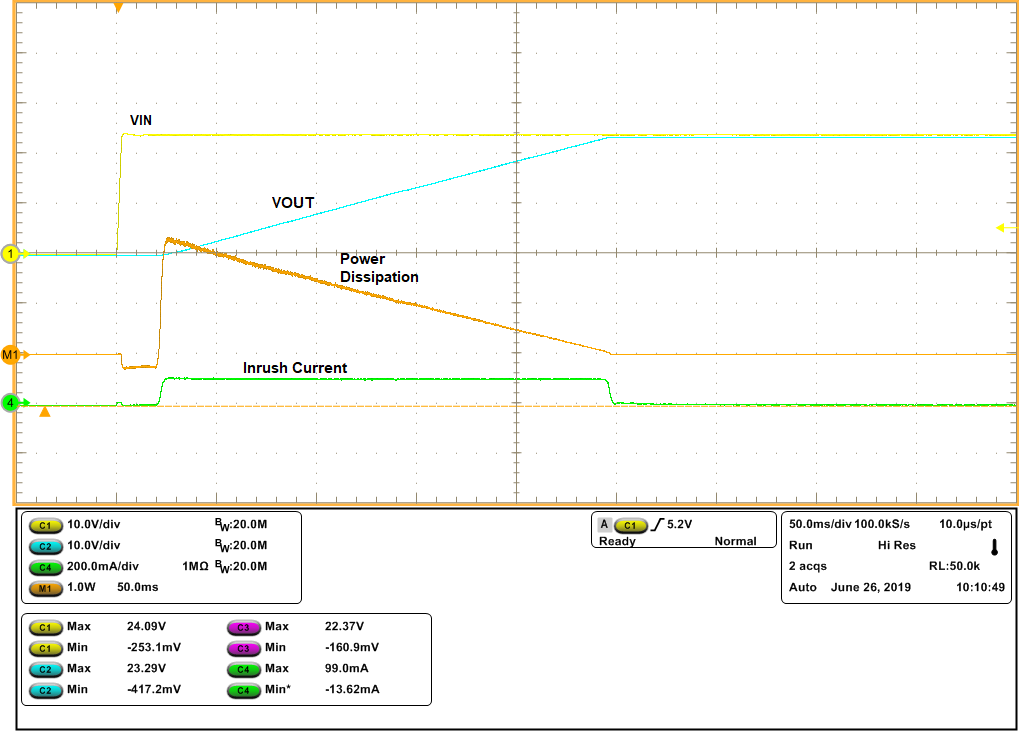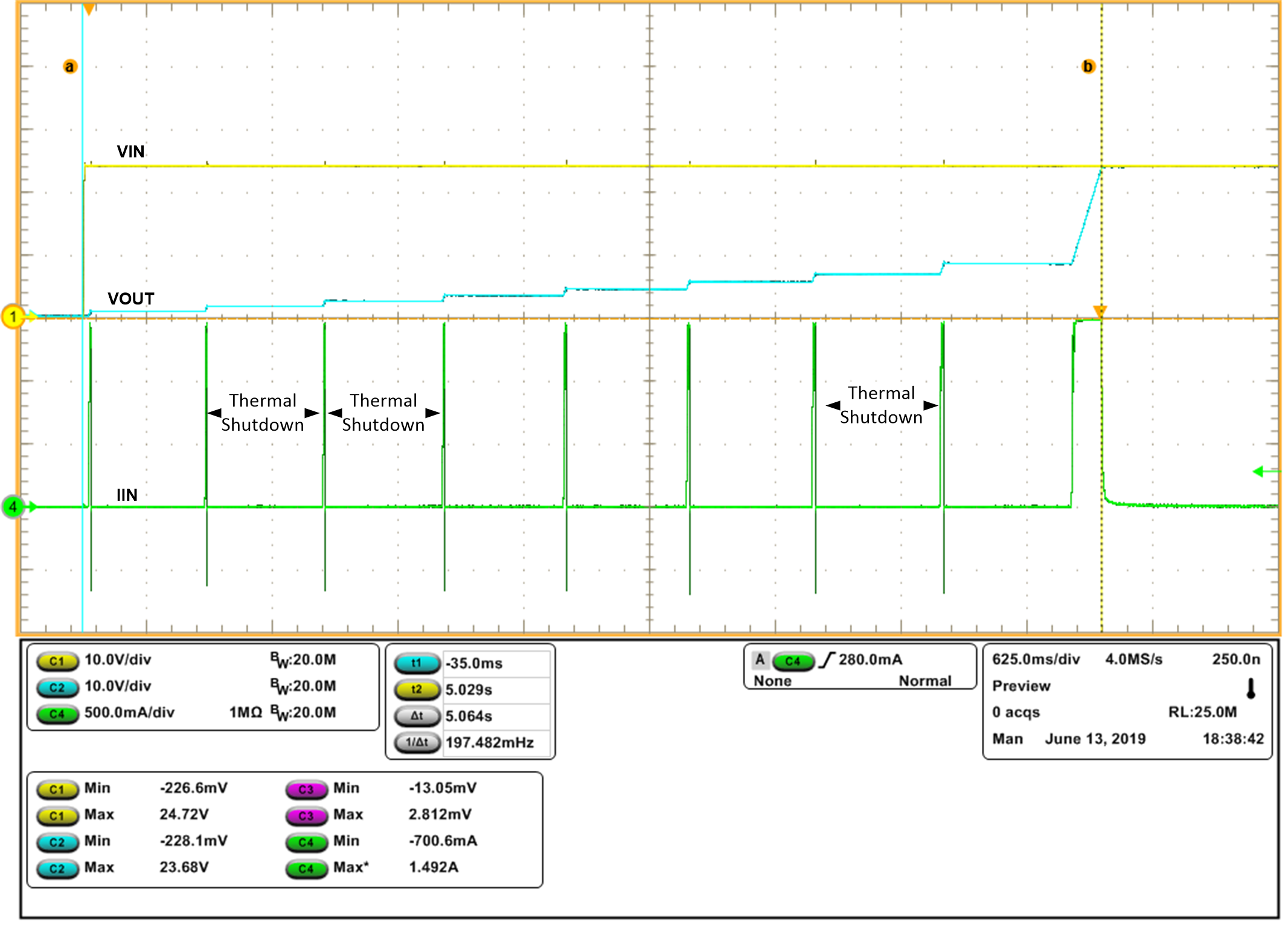SLVAEB9A May 2019 – February 2022 TPS1663 , TPS24710 , TPS24711 , TPS24712 , TPS24713 , TPS2660 , TPS2663
- Trademarks
- 1Introduction
- 2Powering Capacitive Loads with Constant Inrush Current and Output Slew Rate at Start-up
- 3Powering Capacitive Loads with Constant Power Dissipation in Power Switch at Start-up
- 4Powering Capacitive Loads with Thermal Regulation at Start up
- 5Conclusion
- 6References
- 7Revision History
2 Powering Capacitive Loads with Constant Inrush Current and Output Slew Rate at Start-up
Capacitors draw large currents from the power source at start-up, which can lead to tripping of the power source due to overload. To limit the inrush current into capacitors, power switches implement constant current charging of capacitors at start-up. To charge the capacitors with inrush current, the output voltage is increased linearly with time. As an example, the TPS2660 device has a capacitor on the dVdT pin to control the output slew rate and limit the inrush current for output capacitor. Figure 2-1 provides the application circuit with the TPS2660 for charging capacitors with constant inrush current.
At power up, the output capacitor has zero voltage and there is power dissipation of (VIN X IINRUSH). As the capacitor gets charged, the voltage drop across the power device and the power dissipation decreases. For charging the output capacitor to VIN voltage, an average power of (0.5 × VIN X IINRUSH])is dissipated in the power switch during the start-up. Figure 2-2 provides power dissipation for COUT of 1 mF and IINRUSH of 115 mA.
 Figure 2-2 Power Dissipation for
COUT = 1 mF with IINRUSH = 115 mA
Figure 2-2 Power Dissipation for
COUT = 1 mF with IINRUSH = 115 mAFor lower voltages and lower output capacitance, the capacitors can be charged with constant inrush current and constant output slew rate. But as the output capacitance and input voltage increases, the power dissipation in the power switch at power up increases and can lead to thermal shutdown and hiccup in start-up. Table 2-1 provides the power dissipated for a start-up time of 209 ms and constant output slew rate of 115 V/s.
| VIN | IINRUSH | COUT | AVERAGE POWER DISSIPATED |
|---|---|---|---|
| 24 V | 115 mA | 1 mF | 1.38 W |
| 24 V | 250 mA | 2.2 mF | 3 W |
| 24 V | 540 mA | 4.7 mF | 6.5 W |
| 24 V | 1725 mA | 15 mF | 20.7 W |
With increased power dissipation at higher voltage and increased output capacitance, the power switch goes into thermal shutdown and leads to hiccups in start-up. Figure 2-3 shows the hiccups in start-up with output capacitance of 15 mF and VIN of 24 V due to thermal shutdown of power switch.
See the TPS26600 Design Calculator to design with TPS2660x devices with clean start-up.
 Figure 2-3 Hiccups in Start-up with
Constant Inrush Current
Figure 2-3 Hiccups in Start-up with
Constant Inrush Current